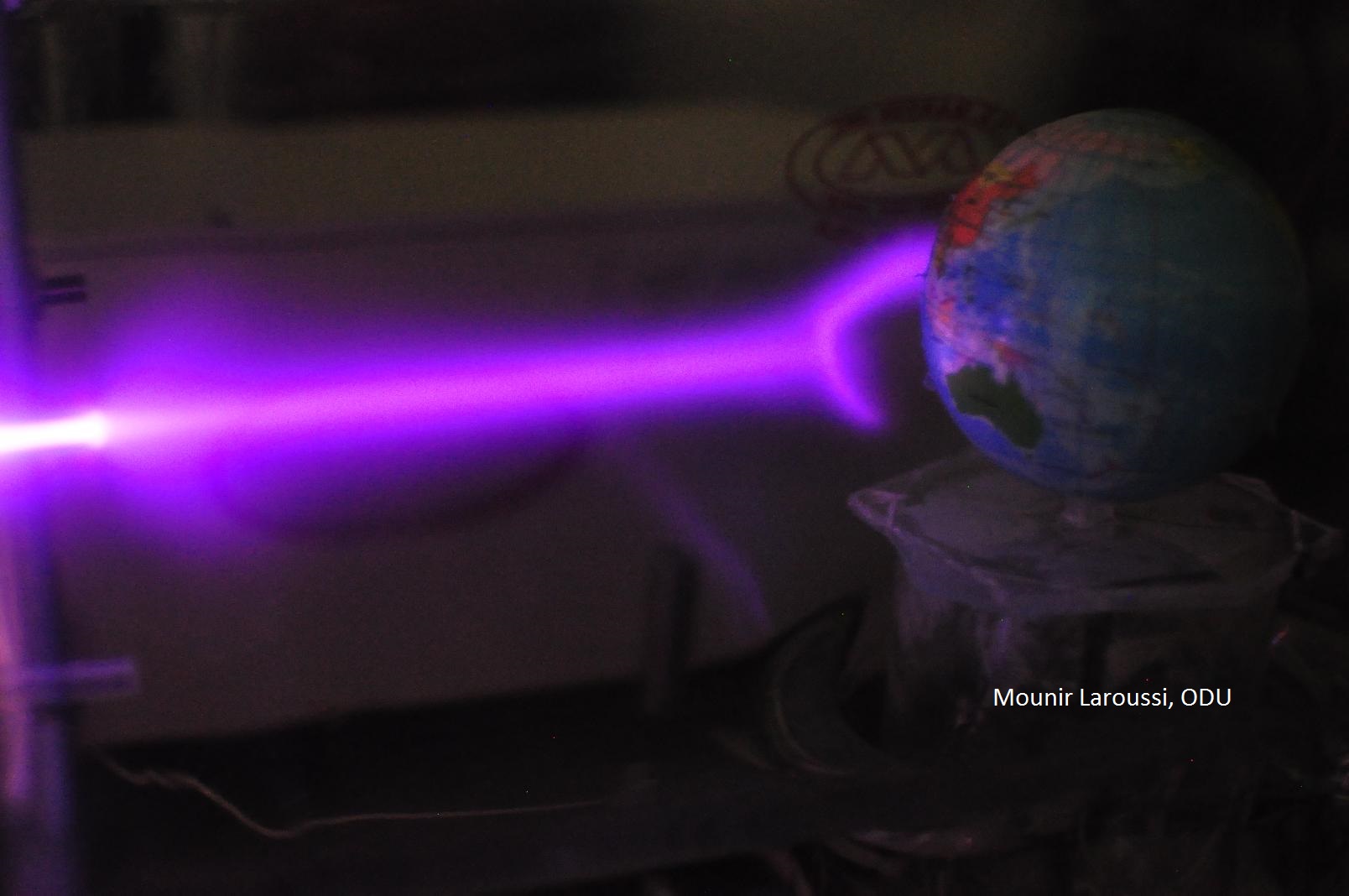ODU Engineering Professor Recreates Mini Aurora Borealis
 The miniature aurora borealis created in Mounir Laroussi's Plasma Engineering & Medicine Institute laboratory
The miniature aurora borealis created in Mounir Laroussi's Plasma Engineering & Medicine Institute laboratory
An Old Dominion University engineering professor has recreated a miniature version of one of nature's most captivating phenomena - the aurora borealis (or northern lights).
Mounir Laroussi, professor and director of the Plasma Engineering & Medicine Institute, replicated the complex molecular interactions by using the low-temperature plasma plume (or "plasma pencil") that he has developed over more than a decade for use in applications from wound treatment to dental hygiene.
"Although we usually use the plasma pencil for biomedical applications such as killing cancer cells, I had the idea to simulate the aurora after reading an article about this spectacular natural phenomenon," Laroussi said. "Many years ago, we discovered that the plasma pencil launches high-speed plasma packets, much like the plasma streams escaping the sun's gravity, except for the size and energy level, of course."
The achievement of Laroussi's lab was featured this month in Physics Today, one of the leading popular publications in North America documenting advances in the physical sciences.
The solar wind, responsible for aurora borealis and aurora australis, consists of plasma released at supersonic speed from the sun's upper atmosphere. As these solar winds approach Earth, these plasma particles get trapped in the planet's magnetic shield and display vibrant plasma dynamics, which can be seen in the far northern and southern hemispheres.
At his Plasma Engineering & Medicine Institute lab, Laroussi and his research team simulated the solar wind's deflection around Earth by using the plasma pencil. It launched plasma packets at high speeds in a controlled trajectory in a vacuum setting, conditions necessary for the creation of aurora borealis.
For the solar wind simulation, the plasma packets play the role of the supersonic plasma emitted from the sun's surface.
To simulate Earth, Laroussi and his team used a 5-inch-diameter plastic or foam ball with a magnet embedded in its center, placing it in a chamber where the pressure could be lowered. Just as Earth's magnetic field deflects most of the solar wind particles, the field around the model of Earth is seen deflecting the plasma packets launched by the plasma pencil.
Although there are plenty of differences between the mini-aurora borealis and the real thing - the ball simulating Earth isn't spinning, for one thing - the plasma never touches the ball's surface. And the glowing effect from the trapping of plasma in a magnetic-like setting emitted the same, vibrant light patterns that have captivated explorers and scientists for generations.
The Plasma Engineering & Medicine Engineering Institute is a research facility focused on conducting fundamental investigations of low-temperature plasmas and their applications in biology, medicine and bioengineering.
To see the article in Physics Today, click HERE.




